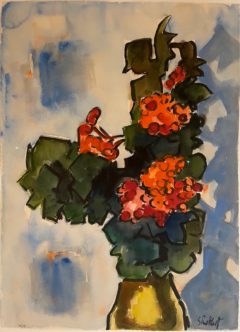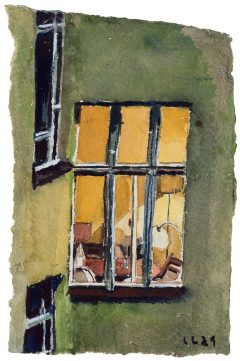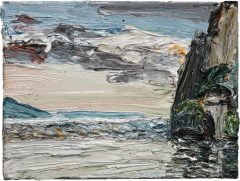Kenneth Noland
Kenneth Noland (1924-1997) is regarded as one of the key figures of American Color Field Painting. Through his clearly structured compositions – concentric circles, color bands, and diagonals – he explored the effect of pure color on the surface. Born in 1924 in Asheville, North Carolina, Noland studied after serving in World War II, including at the legendary Black Mountain College. There, he was deeply influenced by the color theory of Bauhaus master Josef Albers, who had emigrated to the U.S. and taught at Black Mountain. Another pivotal influence came in the 1950s through his encounter with painter Morris Louis, with whom he closely studied Color Field painting and the techniques developed by Helen Frankenthaler. As a result, Noland began applying heavily diluted acrylic paint directly onto raw, unprimed canvas – a method that would become the hallmark of his new approach to painting. Noland’s work is considered one of the most rigorous contributions to abstraction in the wake of Abstract Expressionism. His “Target” paintings, “Chevron” formats, and “Stripe” series continually redefined the relationship between color, form, and the picture plane. Yet his painting is never purely theoretical; it is always physically present and open to emotional resonance. Noland himself described painting as a “form of energy” that does not depict but radiates. His works were shown at documenta 4 in Kassel, as well as in major retrospectives at the Guggenheim Museum (1977) and the Hirshhorn Museum in Washington, D.C. Kenneth Noland participated several times in the Venice Biennale, exhibited regularly at the Museum of Modern Art in New York, and is represented in numerous major collections, including the Whitney Museum, the Metropolitan Museum, and the Centre Pompidou.
- Prices include German VAT. Exclusive of shipping costs for delivery to the European Union. All prices are subject to change and availability. Change region and currency



